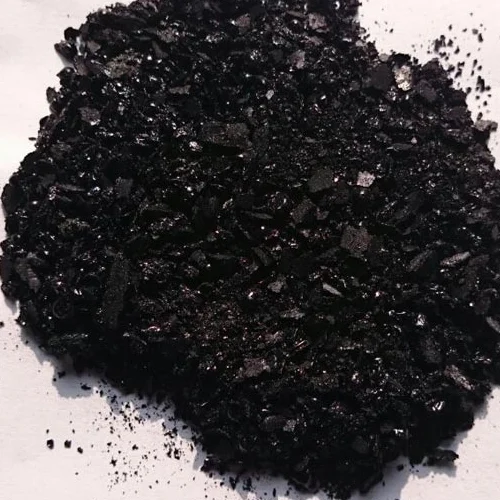Comprehensive Overview of Indigo Dye Chemistry and Current Market Pricing Information
Understanding Indigo Dye Chemistry and Its Market Pricing
Indigo dye, a deep blue pigment renowned for its vibrant color and historical significance, has long captivated artists, designers, and industries alike. From being used in ancient textiles to modern fashion, the chemistry behind indigo dye and its pricing structure reflects both its enduring appeal and the complexities of its production process.
The Chemistry of Indigo Dye
Indigo, scientifically known as indigoid dye, originates from the indole chemical structure. It is primarily derived from the plant Indigofera tinctoria, although synthetic methods have been developed since the late 19th century. The traditional method of extracting indigo involves fermenting the leaves of the indigo plant to create a soluble precursor, which, upon oxidation, reverts to indigo. This chemical transformation is fascinating as it involves a switch from a soluble to an insoluble form, which can then bind to fibers.
The main chemical process can be summarized in a few steps the reduction of indigo to leucoindigo, followed by its introduction to the fiber (e.g., cotton), and finally, oxidation in the air, transforming it back to indigo. This unique property allows for the characteristic rich blues that have made indigo synonymous with denim and other textile applications.
Market Pricing Factors
The pricing of indigo dye is influenced by several variables, including production methods (natural vs. synthetic), market demand, and global economic conditions. Natural indigo has seen a resurgence in popularity due to the growing trend toward sustainable and organic products. This shift has increased the demand for natural indigo, driving prices higher compared to synthetic options, which are often less expensive but face criticism for their environmental impact.
indigo dye chemistry pricelist

According to recent market analyses, the price of synthetic indigo typically ranges from $10 to $20 per kilogram, whereas natural indigo can cost anywhere from $60 to over $150 per kilogram, depending on quality and sourcing methods. Factors affecting the pricing include the availability of raw materials, production costs, and regional market dynamics. Furthermore, fluctuations in agricultural practices due to climate change can also affect the supply and, consequently, the price of natural indigo.
Future Trends in Indigo Pricing
Looking ahead, the indigo dye market is expected to evolve considerably. The increasing focus on sustainable practices and eco-friendly textiles may continue to favor natural indigo, potentially pushing prices higher as producers adapt to meet this demand. Furthermore, advancements in synthetic dyeing technologies may lead to lower costs and increased competition within the synthetic market.
Global trends such as the rise of fast fashion often demand large quantities of dye, putting pressure on production systems and pricing. However, an increasing segment of consumers seeks transparency regarding the dyes used in their garments, creating opportunities for brands to invest in sustainably sourced natural indigo.
Conclusion
The journey of indigo dye from plant to pigment involves a rich tapestry of chemistry and history. Its pricing, influenced by numerous economic, environmental, and ethical considerations, reflects the broader trends and changes within the textile industry. As we move into an era where sustainability takes center stage, the future of indigo—both natural and synthetic—will likely continue to adapt, ensuring its place in the world of color for generations to come.
-
The Timeless Art of Denim Indigo Dye
NewsJul.01,2025
-
The Rise of Sulfur Dyed Denim
NewsJul.01,2025
-
The Rich Revival of the Best Indigo Dye
NewsJul.01,2025
-
The Enduring Strength of Sulphur Black
NewsJul.01,2025
-
The Ancient Art of Chinese Indigo Dye
NewsJul.01,2025
-
Industry Power of Indigo
NewsJul.01,2025
-
Black Sulfur is Leading the Next Wave
NewsJul.01,2025

Sulphur Black
1.Name: sulphur black; Sulfur Black; Sulphur Black 1;
2.Structure formula:
3.Molecule formula: C6H4N2O5
4.CAS No.: 1326-82-5
5.HS code: 32041911
6.Product specification:Appearance:black phosphorus flakes; black liquid

Bromo Indigo; Vat Bromo-Indigo; C.I.Vat Blue 5
1.Name: Bromo indigo; Vat bromo-indigo; C.I.Vat blue 5;
2.Structure formula:
3.Molecule formula: C16H6Br4N2O2
4.CAS No.: 2475-31-2
5.HS code: 3204151000 6.Major usage and instruction: Be mainly used to dye cotton fabrics.

Indigo Blue Vat Blue
1.Name: indigo blue,vat blue 1,
2.Structure formula:
3.Molecule formula: C16H10N2O2
4.. CAS No.: 482-89-3
5.Molecule weight: 262.62
6.HS code: 3204151000
7.Major usage and instruction: Be mainly used to dye cotton fabrics.

